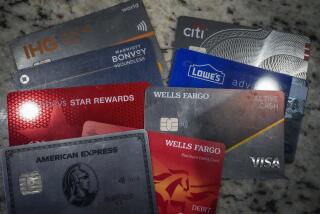REAL ANSWERS
- Share via
Q: With interest rates going up, is this a good time to lock in a rate?
A: If interest rates continue to go up, the cost of a lock-in will pay off. If they don’t, a lock-in could be costly.
Lock-in fees, which are paid in the form of a slightly higher interest rate, ensure that the borrower can obtain the current interest rates and terms two to three months into the future. After spending time shopping for the most favorable rate, a lock-in is one way to make certain that the same rate will still be available when you need it. But like an insurance policy, lock-ins come with a cost and the small interest-rate premium is paid over the life of the loan and can add up to thousands of dollars. Plus, the longer the borrower wants the rate guaranteed, the higher the lock-in fee.
That’s why the experts are mixed about recommending lock-ins.
Of course, a lock-in would make absolute sense if the borrowers knew for sure rates would rise during the next 30 to 60 days, the usual term for which they are available. But no one knows which way rates will move.
For borrowers who like the guarantee of a lock-in, make sure that the lock-in is absolute and doesn’t permit the lender to change rates and terms for any reason.
Be sure the rates and points are guaranteed. Also make sure the lock-in period is long enough, at least 60 days from application. If the lock-in period is shorter and closing is delayed, then the lock-in can expire and the lock-in fee will be lost.
If your lock-in expires, lenders generally offer the loan based on the prevailing interest rate and points.
More to Read
Inside the business of entertainment
The Wide Shot brings you news, analysis and insights on everything from streaming wars to production — and what it all means for the future.
You may occasionally receive promotional content from the Los Angeles Times.










